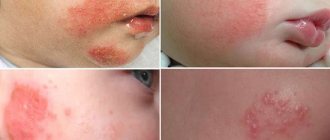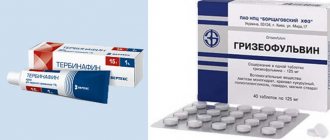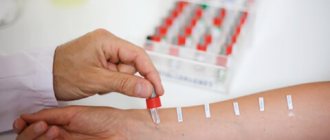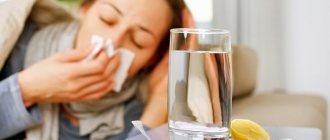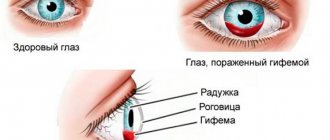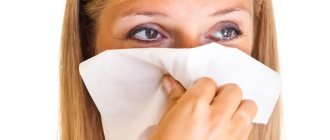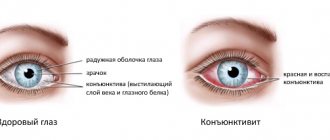In medicine, a runny nose (rhinitis) is called inflammation or irritation of the mucous membrane of the nasal cavity, accompanied by characteristic symptoms. The clinical picture is similar to sinusitis and includes itching, sneezing, and nasal congestion due to blockage of its passages.
The nose produces mucus (a viscous, clear liquid) that traps foreign particles that enter the respiratory tract along with the air. When it is produced in excess, it begins to flow out of the nose, that is, that same runny nose develops.
Description
Allergic rhinitis (allergic, atopic rhinitis, allergic vasomotor rhinitis) is a pathology in which the nasal mucosa, in response to an increase in the allergic background, becomes inflamed and swollen.
The cause of allergic rhinitis is an immediate allergic reaction that occurs as a result of contact of the body with an allergen.
This type of atopic rhinitis occurs mainly in patients with a genetic predisposition to various allergic reactions. Typically, the family history of such patients includes attacks of suffocation of various etiologies, urticaria of allergic origin, disseminated neurodermatitis and some types of allergic rhinitis, which were present in the history of one or more close relatives.
Prevalence of the disease
According to statistics, up to 30% of the world's population currently suffers from rhinitis. However, only 60% of patients seek medical help for this reason. Most people experiencing this disease self-medicate or treat recurrent ARVI.
Over the past few years, the following disease trends have been noted:
- Every year the number of patients with allergic rhinitis increases;
- The disease is most often diagnosed in patients aged 18-24 years;
- pathology is more common in regions with poor ecology;
- in different regions of Russia, the number of patients with rhinitis ranges on average from 12 to 24%.
Based on this, we can conclude that the problem of allergic rhinitis today is more relevant than ever.
Allergic rhinitis: classification
Over the past few years, the classification of allergic rhinitis has changed many times. Just a few years ago, atopic rhinitis was divided only according to the nature of its course (acute allergic rhinitis, chronic and subacute). But at the moment it is considered outdated. Modern allergists use a simpler classification, according to which atopic runny nose can be seasonal, year-round, drug-induced and occupational.
According to the duration, vasomotor allergic rhinitis can be:
- Intermittent - signs of the disease haunt the patient for less than 1 month a year or less than 4 days a week;
- Persistent allergic rhinitis - the disease accompanies the patient for more than 1 month a year or 4 days a week.
According to the nature of the course, allergic rhinitis occurs:
- mild – the presence of the disease does not affect the patient’s daily life and performance;
- moderate and severe – the patient’s quality of life changes for the worse and the patient is unable to attend educational institutions or work, or engage in everyday activities.
Seasonal allergic rhinitis (hay fever)
With a seasonal runny nose, pollen acts as an irritant, and less often, fungal spores. Patients often believe that they develop allergic rhinitis due to poplar fluff. But that's not true. Rhinitis is usually caused by pollen from plants that bloom around the time poplar fluff appears on the streets. The seasonality of allergic rhinitis may vary depending on the region in which the patient lives and remains almost unchanged annually.
With this disease, symptoms manifest themselves most strongly in the morning. In some cases, allergic rhinitis and conjunctivitis are combined. If left untreated, seasonal atopic rhinitis leads to irritability, chronic fatigue, headaches and mental disorders.
The severity of symptoms with such a runny nose depends on how much pollen the patient comes into contact with. It is noteworthy that during the dry season, the signs of the disease usually weaken.
Year-round allergic rhinitis
The second name for this form of the disease is chronic allergic rhinitis. This form of the disease has a much larger number of stimuli to which the body can react in this way. For the same reason, it is considered more severe and requires immediate contact with an allergist and treatment.
Persistent allergic rhinitis is usually caused by dust, hair, particles of animal epidermis and some elements of household chemicals.
At the moment, scientists identify the following factors that can cause year-round atopic rhinitis:
- hot climate with dry air;
- bad ecology;
- unfavorable living conditions.
In the absence of medical care, the consequences of allergic rhinitis can be as follows:
- inflammation of the paranasal sinuses;
- inflammation of the inside of the ear;
- the formation of pathological growths in the nasal cavity.
For this reason, at the first signs of the disease, it is recommended to consult an allergist.
Occupational rhinitis
Typically, this type of allergic rhinitis is more common in adults. It occurs in patients who, due to their profession, are forced to regularly come into contact with some type of dust. Thus, an attack of allergic rhinitis can be caused by flour in bakers, particles of lint in seamstresses, feathers, wool in veterinarians, etc.
With this type, the signs of allergic rhinitis accompany the patient throughout the year, regardless of the season, and become less pronounced only during days off from work or during vacation. This disease must be treated, otherwise over time the patient’s allergic rhinitis will develop into bronchial asthma. Rhinitis is also dangerous because it thins the nasal mucosa, as a result of which any infections can easily penetrate through it into the bloodstream. Therefore, occupational atopic runny nose can cause a change of profession.
Drug-induced rhinitis
This is a type of allergic rhinitis in which swelling of the nasal mucosa occurs in response to the abuse of certain medications. Most often, this reaction is caused by topical vasoconstrictor medications (nasal drops or sprays). In the first few days, they constrict the vessels in the nasal cavity, as a result of which the swelling decreases and congestion goes away. However, after just a few weeks, many patients develop an addiction to the medicine and experience a “rebound symptom.” This means that the vessels cannot narrow and begin to expand. In this case, blood stagnation occurs and, as a result, swelling.
In addition to vasoconstrictor drugs, rhinitis can be triggered by drugs intended to lower blood pressure, some psychotropic, hormonal and anti-inflammatory drugs.
Drug-induced allergic rhinitis is rare in children, since vigilant parents usually strictly adhere to the dosage of medications prescribed to their children.
Allergic rhinitis is a pathology that accompanies a person throughout his life. You need to learn to live with allergic rhinitis. Carrying out preventive measures will help the patient prevent the occurrence of symptoms of the disease, and diagnosing allergic rhinitis in a child and during pregnancy at the earliest stages, carrying out adequate treatment will help avoid many complications.
Variants of the course of allergic rhinitis
- Intermittent: manifestations of the disease less than 4 days a week or no longer than 4 weeks
- Persistent: more often than 4 days and longer than 4 weeks.
The severity of the pathology is determined by the number and severity of its manifestations.
- With mild rhinitis, sleep is not disturbed, normal daytime activities are maintained, and symptoms are mild.
- Moderate or severe rhinitis disrupts sleep and daytime activity, making work and learning difficult.
An example of a diagnosis: Allergic rhinitis, persistent, moderate, period of exacerbation. Sensitization to ragweed pollen.
Symptoms
Photo: pictureperfectcleaning.ca
The most important symptom of atopic rhinitis is watery, clear discharge from the nasal cavity in varying quantities. If infection occurs at this point, allergic rhinitis will manifest itself in the form of prolonged sneezing. In addition, the patient may experience itching in the nose and impaired nasal breathing. Nasal congestion and allergic rhinitis are practically synonymous, since it is one of the first signs of the disease. In this case, congestion manifests itself mainly at night and in the evening. For this reason, allergic rhinitis is accompanied by headaches in patients who do not treat the disease.
When a patient develops allergic rhinitis, even the appearance of the patient may indicate the disease. In patients suffering from atopic rhinitis, the eyes become red and watery; in adult patients, dark circles are often observed under the eyes. Because patients breathe through their mouth, their face may swell. A dry cough with allergic rhinitis is also a clear sign of the disease. It occurs when the nasal mucosa interacts with an irritant.
An allergic reaction after contact with an irritant appears at different times in different people. So, in some patients, an allergic reaction occurs 5-10 minutes after contact with the allergen, maximum after 5-8 hours. For others, it may take about 10 days from the moment a person comes into contact with the irritant until an allergic reaction occurs.
Early signs of atopic rhinitis
Typically, symptoms of allergic rhinitis that occur 5-30 minutes after exposure to the allergen include:
- itchy eyes and increased tearing. If treatment for rhinitis is not started in time, then in this case it may be complicated by acute inflammation of the outer shell of the eye;
- Children often have a runny nose and increased secretion of mucus from the nose. As a rule, the mucus released during allergic rhinitis has a watery consistency. Most often it is transparent. But in some cases it may acquire a yellowish tint. However, if a child has inflammation in the nasal cavity, the mucus can become quite viscous. If you inhale an allergen, you may experience a severe runny nose;
- frequent sneezing, which gets worse in the morning;
- tickling in the throat, allergic rhinitis and cough are often combined;
- itching in the nasal cavity.
Late symptoms of atopic rhinitis
How does allergic rhinitis manifest if it is not treated on time? A few days after the onset of allergic rhinitis, the patient experiences the following symptoms:
- impaired sense of smell. Since the nose is stuffy, the patient constantly breathes through his mouth;
- there is an increase in the sensitivity of the eyes to bright light;
- apathy, fatigue, drowsiness, aggressiveness, sleep disturbance are obvious symptoms of vasomotor allergic rhinitis;
- in some cases, patients experience hearing loss, which is accompanied by ear pain;
- pain or simply discomfort appears in the facial area;
- chronic dry cough with allergic rhinitis is also not uncommon;
- headaches with allergic rhinitis are a consequence of prolonged oxygen deprivation;
- the appearance of allergic circles in the eye area;
- children with atopic runny nose can wipe their nose with their hand in an upward direction to get rid of itching and expose the nasal passages;
- With prolonged absence of treatment, the result of atopic runny nose is often an allergic fold that occurs due to constant rubbing of the nose.
Variations of symptoms in atopic rhinitis
Allergic rhinitis symptoms can vary. It all depends on what type of disease the patient suffers from. Thus, with seasonal atopic rhinitis, patients more often complain of frequent sneezing, itching and increased tearing of the eyes.
Symptoms of year-round allergic rhinitis include the following: nasal congestion, increased secretion of mucus from the nose, sneezing. Often all this is combined with drip infusion into the nasopharynx. In the chronic form of the disease, a change in voice often occurs during allergic rhinitis (nasal sound appears).
But no one can definitively answer whether there can be a fever with allergic rhinitis. Most allergists agree that ordinary allergic rhinitis should not be accompanied by fever. Therefore, if a patient exhibits respiratory inflammation, allergy symptoms and fever, doctors usually prescribe antiviral medications.
Allergic rhinitis sometimes accompanies a person throughout his life, but its symptoms can vary greatly. In general, symptoms of allergic rhinitis are rare in children under 3 years of age. However, from the moment you start attending kindergarten or school, these indicators increase significantly. Thus, in school-age children, the symptoms of the disease are usually more pronounced, but as they grow older, the body may stop reacting so violently to the stimulus, as a result of which they weaken.
An increase in symptoms does not always indicate the transition of the disease to an acute form. This phenomenon can be caused by smoking, inhaling wood smoke, or simply strong odors. Symptoms of rhinitis may also worsen during the cold season, when a person spends most of his time indoors. However, this only applies to rhinitis irritants, which are, for example, pet hair or dust.
Warming up the nose
The procedure for warming up the nose for allergies is similar to the effect of steam inhalation - only liquid is not required for its use. Coarse salt, well calcined in a frying pan, is wrapped in a fabric bag and applied to the sinuses. In addition to salt, you can use buckwheat, millet, rice, regular sand or a hard-boiled hot egg.
Exposure to temperature accelerates the flow of blood to the vessels, as a result of which allergens are removed from the nose along with mucus. It is important to distinguish allergic rhinitis from sinusitis, since if there is purulent contents in the sinuses, heating is contraindicated.
Diagnostics
Photo: medicsina-online.ru
An allergist can make a diagnosis of allergic rhinitis to a patient based on complaints, his medical history and the detection of allergens to which the body reacted in this way.
How to identify allergic rhinitis?
It is impossible to do this on your own at home. Diagnosis of allergic rhinitis in children and adults can only be carried out by an otolaryngologist or allergist. During the examination, the specialist must make sure that the symptoms of rhinitis were not caused by abnormalities in the structure of the nasal cavity. Therefore, during the examination, he must exclude the presence of any curvatures, abnormal bends, thorns and growths in the patient.
Next, the doctor must find out whether the patient’s allergic runny nose is accompanied by an infection. He can obtain this information based on the symptoms that the patient has. In addition, the specialist must accurately determine what type of rhinitis the patient has (chronic, seasonal, medication or occupational) and what allergen causes it.
History and physical examination in the diagnosis of rhinitis
When collecting anamnesis, the doctor must take into account the patient’s genetic predisposition to the disease, the presence of other allergic diseases, the duration of symptoms and the time of their onset, the dynamics of previous treatment (if any). In addition, the otolaryngologist must conduct a rhinoscopy (an examination in which the doctor evaluates the appearance of the nasal mucosa, nasal septum, and assesses the amount and appearance of mucus released from the nasal cavity). Thus, the nasal mucosa in patients with rhinitis is usually pale with a grayish tint and slightly swollen.
Laboratory and instrumental research methods
Allergy sorbent and skin tests are tests for allergic rhinitis that can determine and show that the disease is of an allergic nature. In addition, these tests help to detect allergens to which the patient’s body reacts in this way.
Allergic rhinitis: diagnosis skin test
This allergic rhinitis test can detect IgE in a patient's body in vivo.
The skin test is indicated for patients with:
- vague symptoms of the disease;
- inability to make a diagnosis based on history and examination;
- a history of asthma or inflammatory diseases of the ENT organs.
The skin test is low cost and takes little time. However, it can show the presence of IgE in the body. If the test is carried out for household allergens or allergens that the patient may touch, then the test result can be assessed after 20 minutes. During the evaluation, your doctor will determine how much your skin is swollen and red.
However, in order for the test results to show the most accurate result, antihistamines should be discontinued 7-10 days before. Only a doctor can perform such a test correctly in a laboratory setting. The set of allergens may vary depending on the patient’s place of residence. One of the main advantages of the method is that this diagnosis of allergic rhinitis is suitable for children and adults.
Immunoallergosorbent test
Compared to skin testing, this test is less sensitive, although it is expensive. According to statistics, according to the results of this test, ¼ of patients do not have an allergy, even though it was detected using a skin test. This means that the diagnosis of allergic rhinitis may be made incorrectly. For this reason, this research method is practically not used.
RAST - radioallergosorbent test makes it possible to detect class E immunoglobulins in the blood. As a rule, its results coincide with the results of skin tests. However, this method has one drawback - it cannot be performed during periods of remission of the disease. However, this test can detect radioactive complexes formed in the blood.
From all this, the conclusion suggests itself that self-diagnosis of allergic rhinitis is impossible. This can only be done by an allergist after a thorough examination. But how effective the treatment will be depends on the correctness of the diagnosis.
Prevention
Doctors advise following the recommendations:
- Humidify dry indoor air. If there are no special devices, it is enough to place wet towels in the room or place several containers with water.
- Regularly wipe dust from furniture. There is a simple way to clean upholstery: cover with a damp, light-colored sheet and pat. All dust will remain on the fabric.
- Plan a menu of healthy, simple foods, and not of unfamiliar products, especially canned ones.
- Regularly spend time in the fresh air, take walks, and play sports.
- Hardening procedures are of great importance: rubbing, dousing first with warm and then cold water.
These simple tips will help avoid relapses of chronic allergic rhinitis and reduce alarming symptoms. Whether the patient recovers or not depends primarily on him.
Treatment
Photo: netotita.ru
Treatment of allergic rhinitis can vary greatly depending on the phase of the disease (remission or exacerbation). For atopic rhinitis combined with various complications, treatment with folk recipes alone is unacceptable. In this case, an integrated approach to the problem is required.
However, whatever the form of the disease, and whatever stage it is at, the first stage of treatment always involves isolating the allergen. At the same time, it is worth understanding that most often it is not always possible to completely protect a person from the irritant. Therefore, therapy for allergic rhinitis must necessarily include drug treatment, which should be selected exclusively by a doctor. Only he knows how to get rid of allergic rhinitis in the specific case of each patient.
Immunotherapy for allergic rhinitis
Today, immunotherapy is one of the most common methods of treating allergies. Its essence lies in the injection of small doses of the allergen into the body. Over time, this dosage increases. The purpose of all these manipulations is to train the immune system.
After some time, the immune system will be able to respond normally to allergens. Until recently, immunotherapy took a lot of time and required self-discipline. Today, new generation medications have appeared, thanks to which allergic rhinitis can be cured in 12-24 sessions performed over 1 season.
As a rule, the course of such treatment begins in the autumn.
Hormonal drugs
The use of hormonal medications can also bring good results in a short time. Contrary to popular belief, such medications do not pose a threat to health, as they are applied topically. In addition, new generation drugs have low bioavailability. Thanks to this, hormones will not be able to penetrate through the nasal mucosa.
This treatment is aimed at reducing swelling and reducing sensitivity to irritants.
Sprays and drops
Often, allergists prescribe various sprays and drops to treat atopic rhinitis. They are used only in moments of exacerbation of the disease. However, inhaled drugs for allergic rhinitis have a preventive rather than a therapeutic effect, since the duration of their use should be at least 7-10 days.
Most often, sprays and drops are recommended for the treatment of pediatric patients. Adults use them mainly for mild illness or as a treatment for chronic allergic rhinitis.
These remedies are ideal for the treatment of chronic rhinitis.
Inhalations for allergic rhinitis help reduce swelling and the formation of a film in the nasal cavity, protecting the nasal mucosa from the allergen.
Surgery for the treatment of rhinitis
Although surgery itself for allergic rhinitis cannot cure the disease, it can help correct nasal defects that are an obstacle to treating the disease. Doctors resort to this method as a last resort, only if drug therapy has not brought results.
Surgical treatment of the disease usually includes:
- endoscopic surgery during which the surgeon can correct the curvature of the nose or nasal septum and remove polyps;
- removing fluid from the inner ear or placing it inside a special tube through which it will drain. This method of treatment is often used in children whose atopic rhinitis is combined with infectious ear diseases.
Electrophoresis for allergic rhinitis
As a rule, to treat allergic rhinitis with electrophoresis, doctors use calcium chloride, diphenhydramine and vitamin B1. To avoid unpleasant sensations, the nasal mucosa of patients is pre-treated with novocaine.
During the procedure, cotton swabs are placed into the nasal cavity, after which electrodes are attached to them. During the passage of current, salts disintegrate into ions, which then penetrate through the nasal mucosa. However, this effect is insignificant. The positive dynamics of treatment is achieved due to the stimulating effect, which provokes vasospasm. All this helps relieve swelling in allergic rhinitis and strengthens the nasal mucosa.
Typically, a course of 10 to 14 procedures is prescribed for the treatment of allergic rhinitis.
Phonophoresis
Before performing the procedure, the doctor lubricates the sensor with hydrocortisone. Then the specialist moves it along the mucous membrane of the nasal cavity with lubricating movements. Hydrocortisone has virtually no therapeutic effect during this procedure. Its action is to conduct ultrasound into deeper layers.
This method of treatment is aimed at improving blood microcirculation, reducing swelling and accelerating the healing of microcracks in the nasal mucosa.
The advantage of phonophoresis is that it has virtually no contraindications. Usually, in order to cure vasomotor allergic rhinitis, doctors prescribe a course of 5 to 7 procedures, which must be carried out in the morning.
Laser treatment
To treat rhinitis with laser, allergists use tubes that are placed in the nose during the procedure. Laser radiation affects the mucous membrane in such a way that it strengthens and the swelling goes away. In this case, the laser action is aimed mainly at small vessels. The laser normalizes metabolic processes in the nasal mucosa, as a result of which the volume of plasma passing through it, which forms the edema, is reduced.
This method of treating allergic rhinitis is not used if the patient has infectious diseases of the ENT organs, as this can only aggravate the situation.
Homeopathy for allergic rhinitis
Treatment of rhinitis with homeopathic medicines consists of two stages
- treatment of exacerbation of the disease;
- selection of a constitutional homeopathic remedy.
If the doctor selects suitable homeopathic medicines, the treatment time for hay fever (allergic rhinitis that occurs during certain seasons of the year) can be significantly reduced and the burden on the body from medications can be reduced. Such drugs should be selected exclusively by a specialist based on the individual characteristics of the patient’s body. When selecting a remedy, the doctor usually proceeds not from what makes a person white, but from how sick he is.
Acupressure
Acupressure for allergic rhinitis is another effective way to treat the disease. When the first signs of the disease appear, the sensitivity of the reflexogenic zones increases greatly. When pressing on them, the patient may feel discomfort. It is recommended to perform acupressure self-massage yourself at home. To do this, you need to visit a professional massage therapist. He will explain what to do in case of allergic rhinitis, select for the patient a massage technique that is suitable for his case, and explain how to perform it. In moments of exacerbation, it is recommended to do it 2 times a day: immediately after waking up and before going to bed.
Traditional medicine in the treatment of rhinitis
Sometimes doctors themselves recommend that their patients use traditional methods of treating the disease. Thus, this method is ideal for treating the disease in pediatric patients. Herbs that are used to prepare home remedies for the treatment of atopic rhinitis can also be used to treat asthma of allergic origin (if they are combined). Their effect most often is to suppress the immune response to an irritant.
However, before treating allergic rhinitis in this way, it is recommended to consult an allergist.
Treatment of allergic rhinitis in children
The treatment of childhood atopic rhinitis is practically no different from the treatment of allergic rhinitis in adults. However, when prescribing medications for children, doctors take into account the fact that not all of them can be used in childhood. Thus, most decongestant medications are contraindicated in children. Antihistamines should also be prescribed with extreme caution. For this reason, before starting treatment for atopic rhinitis in a child, you should definitely consult a doctor. Before treating children, everything that can provoke an allergic reaction must be eliminated from their environment and diet.
Related factors
The degree of manifestation of symptoms of chronic allergic rhinitis is influenced by:
- ecological situation;
- hereditary predisposition - children develop individual intolerance to the same substances as their parents;
- concomitant diseases of the upper respiratory tract and nasopharynx - tracheitis, pharyngitis, laryngitis;
- pathologies of the gastrointestinal tract;
- physical exhaustion;
- weakened immune system;
- nasal injuries, which often lead to a deviated nasal septum;
- postoperative complications.
This form of chronic pathology against the background of the listed conditions manifests itself much more actively than in a relatively healthy person.
Medicines
Photo: diet-diet.ru
Allergic rhinitis, no matter in what form it is chronic or acute, always complicates a person’s life. His appearance becomes painful, his ability to work decreases. It is almost impossible to completely cure allergic rhinitis. To do this, the person must be completely protected from the allergen that triggered the development of the disease. However, with the help of medications for allergic rhinitis, the symptoms of this disease can be completely eliminated.
At the moment, allergists use the following groups of drugs to treat rhinitis of allergic origin:
- antihistamines;
- vasoconstrictor;
- anti-inflammatory;
- immunomodulators.
By scope they are divided into:
- systemic (tablets, injection solutions, etc.);
- local (drops, sprays, ointments).
Some of these drugs can be used for a long time, and some only in courses of 5-10 days. The choice of a drug against allergic rhinitis and the duration of its use depends on the form of the patient’s disease, the composition of the drug and the individual characteristics of the patient’s body. Letting the disease take its course or only treating allergic rhinitis with folk remedies threatens the patient with serious complications, for example, bronchial asthma.
Antihistamines
Antihistamines will help eliminate allergic rhinitis in the shortest possible time. These drugs increase the sensitivity of H1 and H2 receptors, as a result of which the disease cannot develop further. Most often they are used to treat acute seasonal rhinitis, less often - chronic. Previously, doctors prescribed diphenhydramine and suprastin to their patients for allergic rhinitis. They were very effective, but, unfortunately, had a depressant effect on the central nervous system. Therefore, today experts recommend using new generation allergy remedies. They do not cause drowsiness, and their effect lasts 24 hours.
Antihistamine sprays for allergic rhinitis, drops, ointments and tablets are currently on sale.
Glucocorticosteroid drugs
These medications have both antihistamine and anti-inflammatory effects and can be used at any stage of treatment of the disease. They stop the manifestation of pathology in the shortest possible time. Thus, nasal drops for allergic rhinitis based on glucocorticosteroids are prescribed to patients with moderate severity of the disease for a long course. In severe stages of the disease or if allergic rhinitis is accompanied by bronchial asthma, doctors select medications with a higher content of hormones. The drugs exhibit their strongest effect on the 7-10th day of use. Therefore, if there is no effect at the beginning of treatment, the patient should not neglect treatment.
Typically, glucocorticoid medications are sold as sprays for allergic rhinitis. Most often, these medications contain mometasone or fluticasone. The undeniable advantage of these drugs is that they have a local effect and are practically not absorbed into the blood.
If the disease worsens, the doctor may prescribe glucocorticoid injections for allergic rhinitis or short-course tablets.
Vasoconstrictor drugs
Vasoconstrictor (vasoconstrictor) medications are used to relieve the unpleasant symptoms of rhinitis. They cause vasospasm, causing them to fill less with blood and swell. Thanks to this, nasal congestion is eliminated in the shortest possible time and breathing improves.
For seasonal allergic rhinitis, these drugs for allergic rhinitis are prescribed during periods of exacerbation in short courses of no more than 10 days. They are often prescribed before using other medications to help relieve swelling so that other medications (such as drops for allergic rhinitis) can better penetrate the nasal cavity.
On today's market there are vasoconstrictor nasal drops for allergic rhinitis and sprays. In parallel with these remedies, in order to avoid drying out the nasal mucosa, it is recommended to irrigate with slightly salted water or sea salt-based medications. The international names of the most common vasoconstrictor drugs are oxymetazoline and phenylephrine.
Anti-inflammatory drugs
This medicine for allergic rhinitis has a membrane-stabilizing effect, as a result of which the release of mucosal mediators stops. Such drugs usually have a cumulative effect. Therefore, they are often prescribed to support the condition of chronic rhinitis or 2 weeks before a possible exacerbation of seasonal allergic rhinitis. Doctors often prescribe anti-inflammatory nasal drops for children for allergic rhinitis. However, such drugs can also be prescribed in tablets (for example, ketotifen).
Immunomodulators
Therapy for allergic rhinitis will not give the desired effect without harmonizing the immune system. For this purpose, homeopathic medicines for allergic rhinitis or dietary supplements are most often used. Such drugs are usually prescribed for a course of 2 weeks. However, if allergic rhinitis occurs in a patient due to an abnormal immune response to a substance of plant origin, then homeopathic remedies should not be used.
All of these medications are equally effective when used correctly. However, to achieve the desired result, a remedy for allergic rhinitis must be selected by a specialist. Treatment of allergic rhinitis should occur only as prescribed by a doctor and only under his supervision.
Effective diet
To get rid of allergies, it is important to identify and eliminate its source. But symptoms can also be reduced with a special diet. If you add honey to tea or coffee instead of sugar, the body’s sensitivity to the allergen will decrease and the symptoms will not appear so brightly.
From the daily diet you need to remove all foods that have a clear property of causing illness. These are citrus fruits, chocolate, strawberries, tomatoes, eggs, peanuts, seafood, wheat, soy. This measure will help you get rid of the disease faster.
You need to carefully analyze the body's reaction to foods. For example, in people who are allergic to ragweed pollen, the disease worsens after eating tomatoes and melons. If a connection is found between such products and an exacerbation of the disease, they should be categorically excluded from the menu.
Hot foods and drinks, such as soups or teas, will help relieve the condition. The high temperature of food thins mucus and helps relieve nasal congestion.
pneumonia.ru
Folk remedies
Photo: lacare.ru
Unpleasant symptoms of allergic rhinitis, such as runny nose, nasal congestion, headaches and itching in the nasopharynx as a result of severe swelling, can lead to complete exhaustion of even the most persistent patients. Therefore, patients are ready to use any treatment methods just to eliminate the signs of pathology. And the first thing they turn to is folk remedies for allergic rhinitis (and this often happens before visiting an allergist). But it's not right. Herbs, although they seem harmless to many people, are also medicines and sometimes very powerful ones. Therefore, their use without consulting a doctor is unacceptable!
However, these treatment methods also have their advantages. So, unlike medications, decoctions and infusions do not have a negative effect on the liver.
The best solution in this case is treatment of allergic rhinitis with traditional methods in combination with traditional treatment after consultation with an allergist. Thus, the patient will be able to shorten the recovery time, while reducing the negative impact of medications on the body.
You don’t have to look long for recipes for making homemade medicines. Traditional medicine has been treating allergic rhinitis for many centuries and has already accumulated a whole arsenal of remedies that have been proven over the years. You can find the most effective of them on our website.
Washing
You need to rinse your nose as follows:
- Washing with medicinal plants: chamomile, string, calendula, sage, eucalyptus. The method of preparing the solution is identical for each type of medicinal plant. There are two options for preparing raw materials: decoction and infusion. For decoction 1 tbsp. l. Pour a glass of boiling water over the crushed plant and keep on low heat for 15 minutes. For infusion, do not put the mixture on the fire, but place it in a closed container, wrap it with a thick cloth and leave for 30 minutes. Apply 2 to 4 times a day.
- Brine. A ready-made sea salt-based rinse can be purchased at a pharmacy or made yourself at home. For the second method you need to take 1/3 tsp. iodized or sea salt, dissolve in a glass of boiled warm water. To rinse, use a syringe, a syringe without a needle, or a medical bulb. The liquid must be administered slowly, with your mouth open and your head tilted at a right angle, so that the solution exits the nasopharynx through the oral cavity.
- Furacilin. Rinsing the nose with this drug is possible after preparing a mixture with tablets or using a ready-made pharmaceutical solution. To treat rhinitis using the first option, you need to heat 200 ml of water to 40 degrees, grind 2 Furacilin tablets, mix the components. The solution is filtered and injected into the nasopharynx identical to other rinsing solutions. You need to repeat the procedure 3 times a day, the full course is 5-7 days.
Modern diagnostics of allergic rhinitis allows one to accurately determine the cause of symptoms, and a wide range of drugs to promptly eliminate its manifestations.
Some of the medical and folk treatment procedures against allergic rhinitis have a general preventive and antibacterial effect on the entire body.
Author of the article: Palno Inna
Article design: Oleg Lozinsky
Clinical picture
Symptoms characterizing allergic rhinitis:
- frequent bouts of sneezing, mainly in the morning;
- mucous discharge from the nose: clear and watery;
- itching in the nose, the patient often scratches the tip of the nose;
- difficulty breathing through the nose due to swelling of the mucous membrane;
- fever (not always);
- increased fatigue;
- decreased appetite.
Breathing occurs mainly through the mouth, and the sense of smell may decrease. There is noticeable swelling of the face, and sometimes there is lacrimation. Patients are sensitive to strong chemical odors. In adults, the disease provokes night snoring.
There is seasonal and year-round allergic rhinitis.
The disease can negatively affect the patient's ability to work and function.
We are looking for the cause of the disease ourselves
If religion or financial status does not allow you to conduct a laboratory test - take blood tests, smears, take a photo, then you can use the “scientific poking method” and determine the allergen at home.
- Become an ascetic and minimalist for a couple of weeks.
- Go on a strict diet and remove all unnecessary objects from the room, from plants to feather pillows.
- Wash the room clean without using chemicals and try to spend as much time in it as possible without using anti-allergy medications.
- Keep a special diary in which you will note how you feel.
Gradually return familiar furnishings to the room. If you felt good for a whole week, and when your favorite violet returned to the window, a stream of discharge flowed from your nose, then the reason is in the flower.
Essential oils
In the absence of the options listed above, you can inhale essential oils diluted in hot water, most of which have an anti-inflammatory and antiseptic effect (8-10 drops per 1 liter of water), for example menthol oil, eucalyptus oil, juniper oil, fir oil, tea tree oil. To reduce swelling, essential oils are rubbed into the maxillary sinuses or instilled into the nasal cavity. The medicine is prepared by taking olive oil (50 ml) as a base and adding a few drops of pine, rosemary, sage or peppermint essential oil. A good effect is achieved by instilling Kalanchoe juice into the nose.
The only contraindication to the procedure is individual intolerance to a particular oil.
Possible complications
If treatment is ineffective or treated exclusively with folk remedies, some complications may arise:
- Nosebleeds.
- Loss of smell.
- Nasal polyps. Growths formed in the nasal sinuses or on the mucous membrane of the nasal cavity. They can grow singly or in groups. Basically, both nostrils are affected at once. Polyps make breathing difficult and reduce the sense of smell.
- Sinusitis. Inflammation or infection of the sinuses by harmful microbes. Signs of sinusitis: pain in the affected sinus, radiating to the teeth while eating, greenish discharge from the nasal cavity, fever.
Preventive measures. Preventive measures include:
- minimal contact with “irritants”;
- maintaining nasal hygiene;
- purifying the air, avoiding places where dust accumulates;
- to prevent relapses, you need to complete the course of treatment to the end (treatment with folk remedies should not be the main one).
olore.ru
Acupressure
This ancient technique, acupuncture, allows you to relieve nasal swelling by causing improved blood circulation in the tissues. It can be done like this:
- placing your thumbs on the wings of your nose, perform rotational movements clockwise for 1-2 minutes;
- Using the pads of your middle, ring and little fingers, gently apply pressure to the area from the nose to the ears (under the eyes);
- Use three fingers of both hands to massage your forehead.
Despite the fact that touching some points of the face may be accompanied by pain, it is recommended to massage them until the discomfort disappears.
